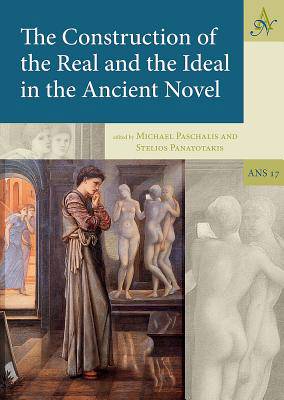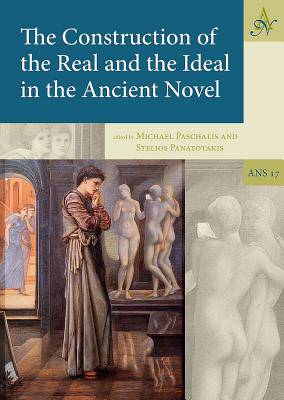
- Afhalen na 1 uur in een winkel met voorraad
- Gratis thuislevering in België vanaf € 30
- Ruim aanbod met 7 miljoen producten
- Afhalen na 1 uur in een winkel met voorraad
- Gratis thuislevering in België vanaf € 30
- Ruim aanbod met 7 miljoen producten
Zoeken
The Construction of the Real and the Ideal in the Ancient Novel
€ 92,40
+ 184 punten
Omschrijving
The present volume comprises thirteen of the papers delivered at RICAN 5, which was held in Rethymnon, Crete, on May 25-26,2009. The theme of the volume, ' The Construction of the Real and the Ideal in the Ancient Novel, ' allows the contributors the freedom to use their skills to examine the real and the ideal either individually or in conjunction or in interaction. The papers offer a wide and rich range of perspectives: a political reading of prose fiction in Late Period Egypt (Selden); the presence of robbers and murderers in ideal fiction (Dowden); the interaction between illusion and reality in novelistic ekphrasis (Zeitlin); divine loves as real precedents for human loves (Rosati); comical elements in Heliodorus' Aethiopika (Doody);myths as paradigms for the inexperienced lovers in the Greek novels (Létoublon); moral ideas in the Odyssey and the Greek novels in relation to moralizing interpretations of Homer (Montiglio); the reality of the basic plot of Callirhoe in the light of historical events and Aristotle's Poetics (Paschalis); the interaction between fictionality and reality in Daphnis and Chloe (Bowie); entrapment and insu fficient understanding of reality in the Satyrica (Labate); fantasy, physical and ideal landscapes in Apuleius' Metamorphoses (König); bridging the gap between Photis (real) and Isis (ideal) in Apuleius (Carver); the gendered aesthetics of the Greek novels viewed through the lens of the mimetic theory of Dionysius of Halicarnassus (Whitmarsh).
Specificaties
Betrokkenen
- Uitgeverij:
Inhoud
- Aantal bladzijden:
- 312
- Taal:
- Engels
- Reeks:
- Reeksnummer:
- nr. 17
Eigenschappen
- Productcode (EAN):
- 9789491431258
- Verschijningsdatum:
- 31/08/2013
- Uitvoering:
- Hardcover
- Formaat:
- Genaaid

Alleen bij Standaard Boekhandel
+ 184 punten op je klantenkaart van Standaard Boekhandel
Beoordelingen
We publiceren alleen reviews die voldoen aan de voorwaarden voor reviews. Bekijk onze voorwaarden voor reviews.







